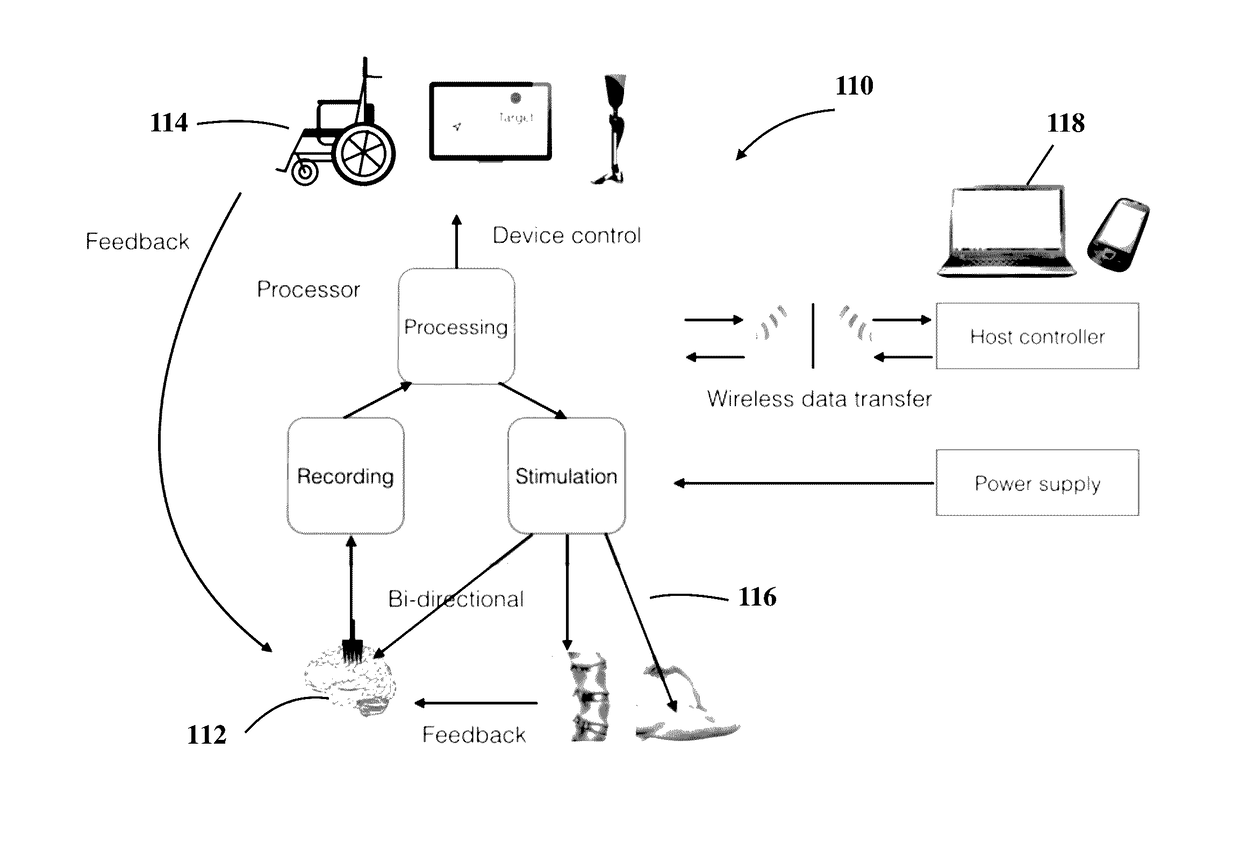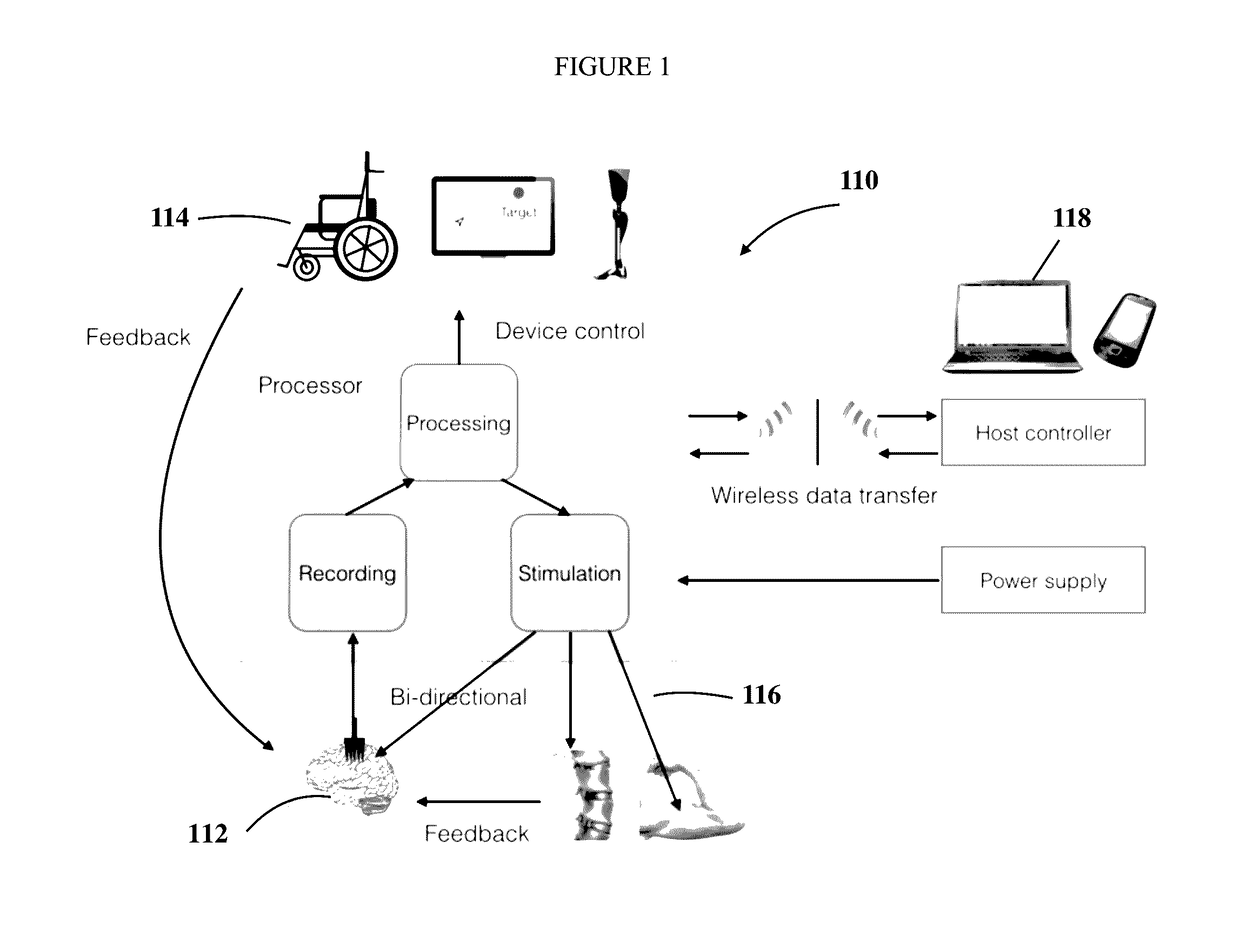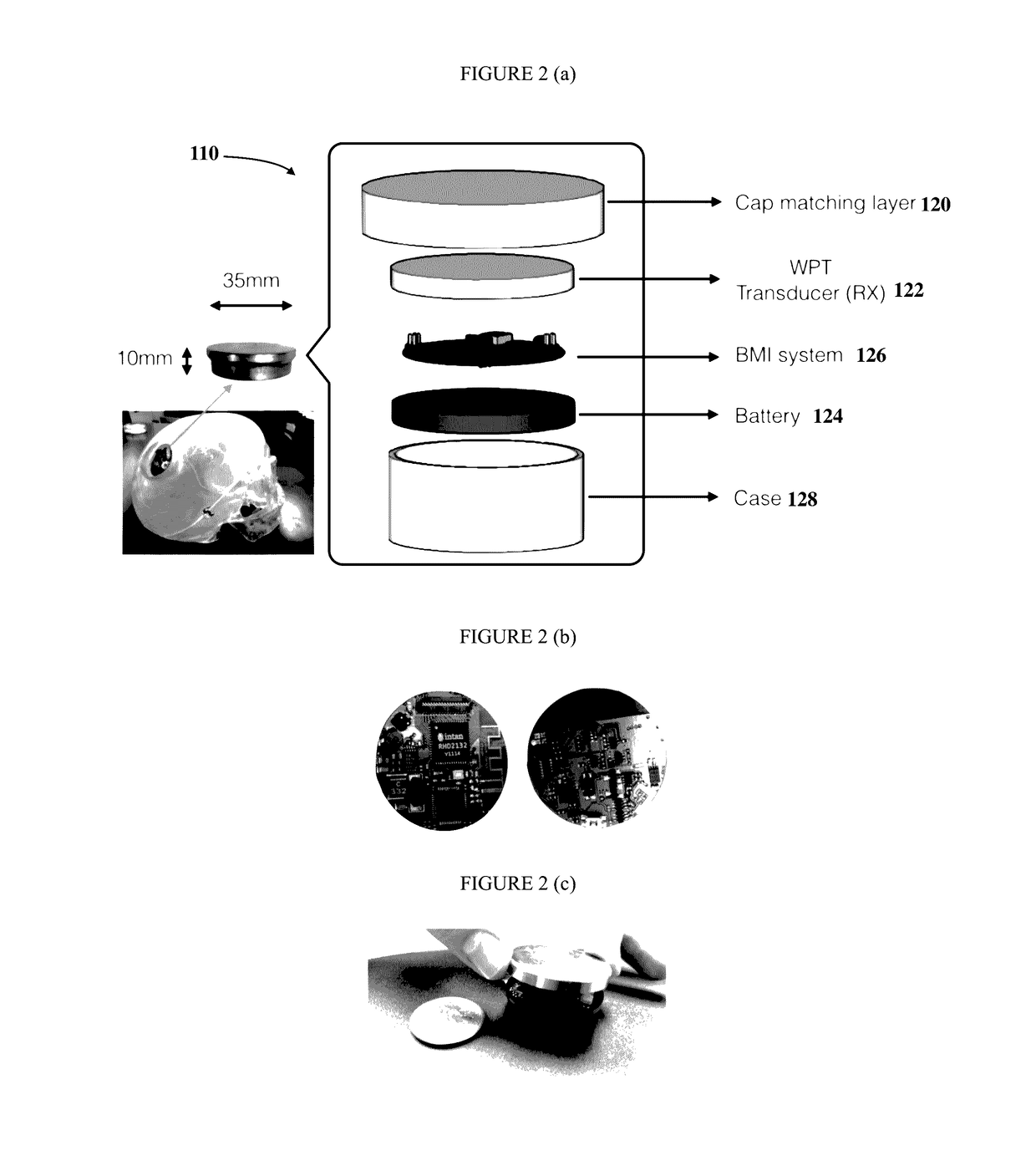Apparatus and method of implantable bidirectional wireless neural recording and stimulation
a wireless neural and wireless technology, applied in the field of implantable bidirectional wireless neural recording and stimulation, can solve the problems of low spatial resolution, poor signal-to-noise ratio, and damage to the cns, and achieve the effect of enhancing the native processing of spinal nerve activity or control
- Summary
- Abstract
- Description
- Claims
- Application Information
AI Technical Summary
Benefits of technology
Problems solved by technology
Method used
Image
Examples
example
2π Piezo
[0197]Referring now toFIG. 29, a transducer circumferentially encompasses the circuitry 126, e.g. SoC, sensor module, stim module, power control module. This “2π” piezo ultrasonic wireless power transmission system is shown as part of the closed-loop, co-adaptive, bi-directional brain-machine interface (BBMI) system 244 to provide the required electric power.
[0198]In this example, the ultrasonic power transmission system has a novel piezoelectric transducer 240 facing each other between skin tissues converting electrical energy to mechanical vibrational energy or vice versa. This wireless power transfer module has a rechargeable battery 124 to provide the required power source for the BBMI Engineered System 244. As previous described, the ultrasonic wireless power transfer system converts electrical energy to ultrasonic energy. Then, a receiver that converts the ultrasonic energy to the electrical energy again. This allows the generated acoustic wave to travel through the me...
PUM
 Login to View More
Login to View More Abstract
Description
Claims
Application Information
 Login to View More
Login to View More - R&D
- Intellectual Property
- Life Sciences
- Materials
- Tech Scout
- Unparalleled Data Quality
- Higher Quality Content
- 60% Fewer Hallucinations
Browse by: Latest US Patents, China's latest patents, Technical Efficacy Thesaurus, Application Domain, Technology Topic, Popular Technical Reports.
© 2025 PatSnap. All rights reserved.Legal|Privacy policy|Modern Slavery Act Transparency Statement|Sitemap|About US| Contact US: help@patsnap.com



